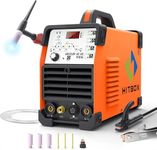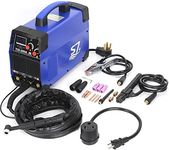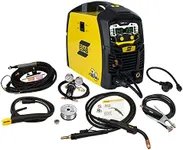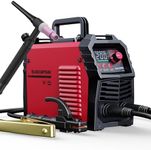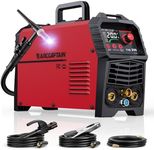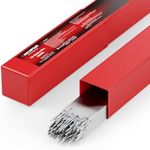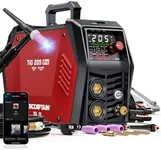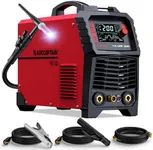Buying Guide for the Best Ac Tig Welder
Choosing an AC TIG welder can feel overwhelming, but understanding the key features will help you find the right machine for your needs. Start by thinking about the types of metals you plan to weld, how often you'll use the welder, and your experience level. The right welder should match your projects, be comfortable to use, and offer enough flexibility for future needs. By focusing on the main specifications, you can make a confident and informed decision.Amperage RangeAmperage range refers to the minimum and maximum welding current the machine can provide. This is important because different materials and thicknesses require different amperage settings. Lower amperage is needed for thin metals, while higher amperage is necessary for thicker materials. Machines with a wide amperage range are more versatile, allowing you to work on a broader variety of projects. If you plan to weld both thin and thick materials, look for a welder with a broad range; if your work is more specialized, a narrower range may suffice.
AC/DC CapabilityAC/DC capability means the welder can operate on both alternating current (AC) and direct current (DC). AC is essential for welding aluminum and magnesium, while DC is used for steel, stainless steel, and other metals. If you only plan to weld steel, DC might be enough, but for maximum flexibility, especially if you want to weld aluminum, make sure your welder supports both AC and DC modes.
Duty CycleDuty cycle is the percentage of a 10-minute period that the welder can operate before needing to cool down. For example, a 60% duty cycle at a certain amperage means you can weld for 6 minutes and then must let the machine rest for 4 minutes. A higher duty cycle is important for longer or more demanding welding sessions, such as in professional or industrial settings. For occasional or hobby use, a lower duty cycle may be sufficient.
AC Balance ControlAC balance control allows you to adjust the ratio of cleaning action to penetration when welding aluminum. More cleaning helps remove oxide from the surface, while more penetration allows deeper welds. This feature is important for getting clean, strong welds on aluminum. If you plan to do a lot of aluminum work, look for a welder with adjustable AC balance; if not, this feature may be less critical.
Start Type (High Frequency vs. Lift Start)The start type refers to how the arc is initiated. High frequency (HF) start allows for non-contact arc initiation, which is cleaner and reduces contamination, especially important for aluminum. Lift start requires touching the tungsten to the workpiece, which can be less precise. If you want cleaner starts and plan to weld aluminum, HF start is preferable; for basic steel work, lift start may be adequate.
Pulse FunctionPulse function allows the welder to alternate between high and low current rapidly, which helps control heat input and reduces the risk of burning through thin materials. This is especially useful for welding thin metals or for precise, high-quality welds. If you plan to work on thin materials or want more control over your welds, look for a welder with a pulse feature.
Portability and SizePortability and size refer to how easy it is to move and store the welder. Smaller, lighter welders are easier to transport and store, which is important if you need to move your equipment between locations. If you have a dedicated workshop, size may be less of a concern, but for mobile work or limited space, a compact welder is a better fit.


